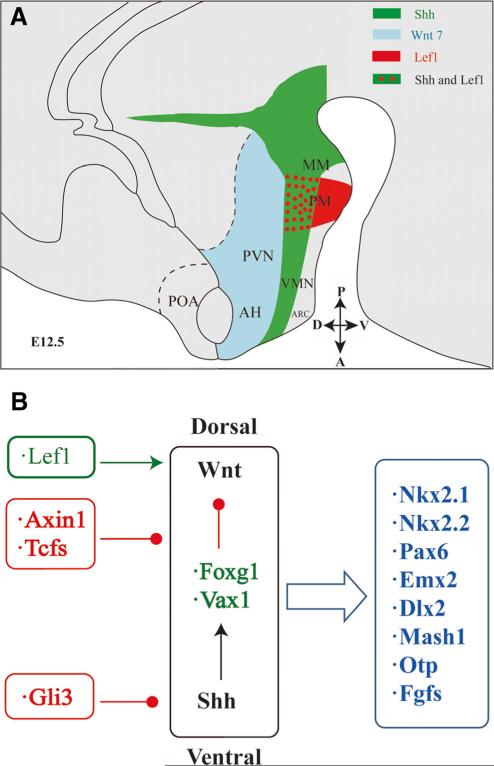Fig. 4.
The Wnt-Shh signaling network and hypothalamic development. a Schematic drawing of expression regions of Shh and Wnt components in the hypothalamus of the E12.5 mouse brain. The expression region of Shh is denoted in green; Lef1 is denoted in red; Wnt7 is denoted in blue. Both Shh and lef1 are expressed in regions with red dots and green background. Other brain areas are shown in gray. AH anterior hypothalamus, ARC arcuate nucleus, MM mammillary area, PM premammillary region, POA preoptic area, PVN paraventricular nucleus, VMN ventrome-dial nucleus. The anterior-posterior (A-P) and dorsal-ventral (D-V) directions of the hypothalamus in the E12.5 mouse brain are shown. b Genes of the Wnt-Shh signaling network in the developing hypothalamus. Shh signaling is mainly located in the ventral hypothalamus while Wnt signaling is in the dorsal area. The essential mediator of the Wnt pathway Lef1 and inhibitors of Wnt signaling Axin1 and Tcfs regulate Wnt activity. Shh components Gli3 represses Shh activity in the developing hypothalamus. Early developmental genes Vax1 and Foxg1 regulate interactions between Wnt and Shh pathways. The Wnt-Shh signaling network regulates expression of downstream genes related to neurogenesis such as Nkx2.1, Nkx2.2, Pax6, Emx2, and Dlx2, and molecules that specify subnuclei and neuronal lineage such as Mash1, Otp, and Fgfs

